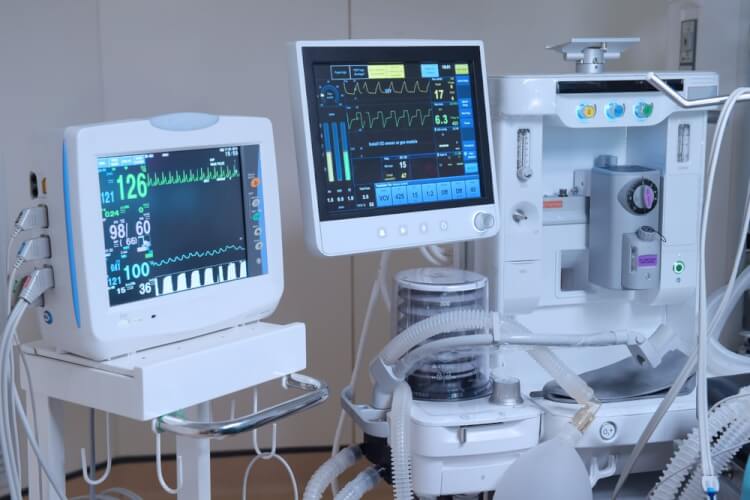So, what exactly is this modality? Here we will discuss modalities in the medical field in detail.

table of contents
- What is modality in medical devices?
- Medical devices classified by modality
- “Modality code” defined by DICOM, an international project for medical imaging
- What is “DICOM”?
- Modality code defined by DICOM
- summary
What is modality in medical devices?
Modality generally means “style” or “aspect.” In the medical field, the word “modality” is used to describe the type or type of medical device. Especially in actual medical settings, medical imaging equipment is often collectively referred to as modality equipment. Modality equipment can be said to be indispensable to providing modern advanced treatment technology.
Medical devices classified by modality
Various modality devices are used in medical settings. For example, MR I (magnetic resonance diagnostic equipment) , which uses a strong magnetic field and radio waves to take cross-sectional images of the body, is a typical modality. This is called MR in the field. CT (computed tomography), which uses X-rays to take cross-sectional images of the body, is also included as a modality.
Other modalities include CR (computer radiography), which uses X-rays to image organs and blood vessels, DR (digital X-ray imaging equipment), XA (angiography X-ray diagnostic equipment), and US. (ultrasound diagnostic equipment), ES (endoscope equipment), etc.
“Modality code” defined by DICOM, an international project for medical imaging
A DICOM “modality code” is defined for each modality. This is a two-letter alphabetical representation of the modality medical device classification. From here, we will explain what DICOM modality codes are when using modalities.
What is “DICOM”?
DICOM is an international standard established for handling data taken by medical devices such as MRI and CT, and is an acronym for “Digital Imaging and Communications in Medicine.” With DICOM, you can search and save captured image and video data.
DICOM is a new standard established by the Radiological Society of North America (RSNA) in 1993. Originally, there was a standard called “ACR-NEMA300-1985” established by the North American College of Radiology (ACR) and the National Electrical Manufacturers Association (NEMA) in 1985, but with the development of medical devices, the standards have been updated. Ta.
NEMA has published a standard document regarding this specific standard. DICOM is constantly being updated, adding new equipment and removing obsolete or rarely used equipment. Since DICOM standards and explanations are written in English, organizations such as the Japan Imaging and Medical Systems Industry Association (JIRA) publish Japanese translations for domestic use.
Please note that there are some parts of the standards established by DICOM that have multiple interpretations. Please note that different companies developing modalities may have different responses. However, in order to sell modalities that are compatible with DICOM, it is necessary to specifically indicate what is supported and to accurately indicate the scope of coverage. Therefore, when actually using a device that supports DICOM, it is better to check what information is displayed. This presentation of content is called a “conformance statement.”
Modality code defined by DICOM
There are various modality codes defined by DICOM. Examples of correspondence between devices and modality codes are as follows.
- AS (vascular microscopy)
- BI (Biomagnetic Imaging)
- CD (Color Flow Doppler)
- CF (X-ray Cinema Fluoroscopy)
- CP (colposcopy)
- CR (computer radiography)
- CS (cystoscopy)
- CT (computed tomography)
- DD (Double Doppler)
- DF (digital fluoroscopy)
- DG (transmission graph)
- DM (digital microscopic examination)
- DS (digital subtraction angiography)
- EC (ultrasound cardiac examination)
- ES (endoscopy)
- FA (fluorescein angiography)
- FS (fundus examination)
- LP (Laparoscopy)
- LS (laser surface scan)
- MA (magnetic resonance angiography)
- MR (magnetic resonance)
- MS (Magnetic Resonance Spectroscope)
- NM (Nuclear Medicine)
- OT (other)
- Pt (PET)
- RG (Radiographic Imaging)
- ST (single photon emission computed tomography)
- TG (temperature record)
- VF (video fluorography)
summary
There are various types of modalities used in the medical field. Technological development is progressing along with advances in medical care, and new and highly functional modalities are appearing more and more. When using modalities, it is important to understand the modality codes defined by DICOM. Deepen your understanding of modalities and use them correctly.
